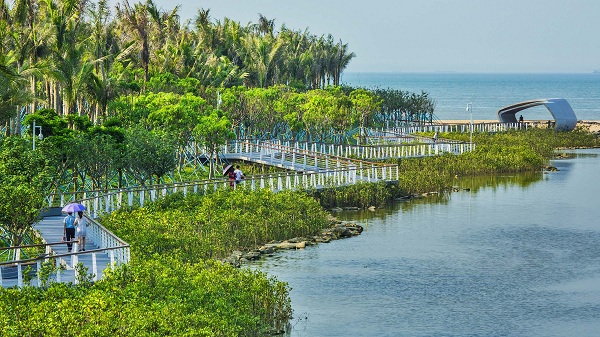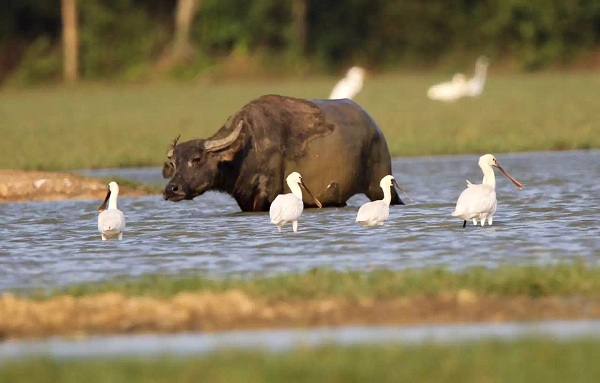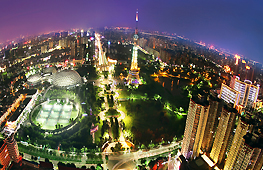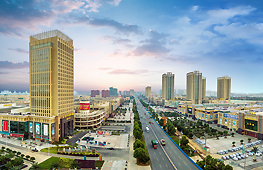New wetlands help to transform tourist capital
Features serve to inspire local population, tourists, while boosting city's core competitiveness
Haikou, the capital of China's southernmost Hainan province and a renowned tourist city famous for its charming coconut trees and warm sunshine, is transforming itself into a destination that also features rich and lush wetlands, thanks to enviable progress made in the restoration of its local ecosystems.
For locals, it's all been good.
The Meishe River, known as Haikou's "mother river," is now a favorite place for retired worker Lao Zheng and his friends to hang out.
"We rarely came to the river in previous years, because many parts were terribly smelly," he said.
"Now you can see egrets flying overhead. There are lots of people around and the other day we even saw a couple of people taking a nap under the nearby banyan trees," he said.
 |
|
Visitors admire Wuyuanhe National Wetland Park, which boasts rich bio-diversity, with 11 species under second-class national protection.[Photo by Huang Yixiao/China Daily] |
To tackle black odors caused by industrial pollution and the dumping of daily domestic garbage in the city's rivers, lakes and wetlands - and to fully implement the strategy of the authorities to build Hainan into a national demonstration zone for ecological civilization - Haikou has pioneered integrated planning for the restoration of its ecological resources.
It has issued strict guidelines to safeguard ecologically fragile areas, the overall quality of the environment and promote rational use of resources, and has introduced hard-hitting access limits for new industrial projects.
Choosing not to use conventional methods to reinforce the riverbanks, large-leaf oil grass and plants were grown on the river banks and mangroves were planted in the rivers, the first successful planting of mangroves in urban rivers in China. The trees and plants will help to naturally filtrate and purify the waters.
"The cost of such a practice isn't very high, but the effect is a lot better," said Yu Kongjian, dean of the College of Architecture and Landscape at Peking University.
The Meishe River National Wetland Park, covering 14,000 square meters, took shape in nine months on top of a former waste dump last year.
Regarded as the largest functional eight-stage terraced field ever built in China, the wetland can treat 5,000-8,000 metric tons of domestic sewage every day and has become an oasis for water plants and all kinds of waterfowl. It has been awarded the appellation "National Water Conservancy Scenic Area". Yu said Haikou's ecological restoration efforts had created wetlands within city areas.
 |
|
Rare birds stay in harmony with waterbuffalo at Dongzhaigang wetland.[Photo by Huan Sheng/China Daily] |





















